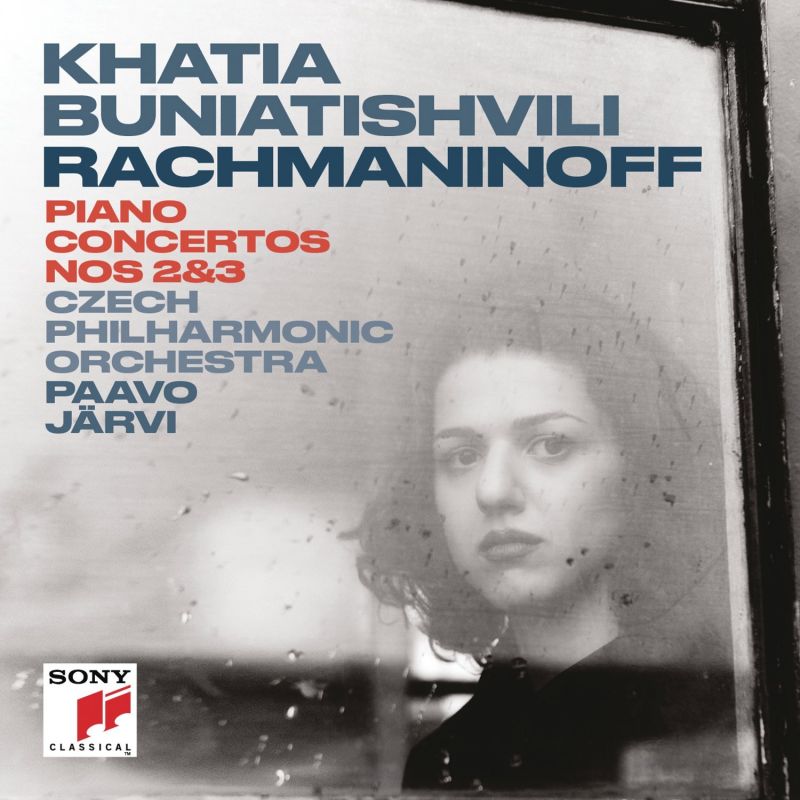RACHMANINOV Piano Concertos Nos 2 & 3
View record and artist detailsRecord and Artist Details
Composer or Director: Sergey Rachmaninov
Genre:
Orchestral
Label: Sony Classical
Magazine Review Date: 05/2017
Media Format: CD or Download
Media Runtime: 70
Mastering:
DDD
Catalogue Number: 88985 40241-2

Tracks:
| Composition | Artist Credit |
|---|---|
| Concerto for Piano and Orchestra No. 2 |
Sergey Rachmaninov, Composer
Czech Philharmonic Orchestra Khatia Buniatishvili, Piano Paavo Järvi, Conductor Sergey Rachmaninov, Composer |
| Concerto for Piano and Orchestra No. 3 |
Sergey Rachmaninov, Composer
Czech Philharmonic Orchestra Khatia Buniatishvili, Piano Paavo Järvi, Conductor Sergey Rachmaninov, Composer |
Author: Harriet Smith
This can pay dividends, for I’ve never liked the slow movements to be taken too spaciously, finding those who follow the composer’s own tendency for swiftness to my taste. In the Second Concerto’s Adagio sostenuto Buniatishvili emerges from the brief orchestral introduction with complete naturalness and everything flows easily, which is as much a credit to Paavo Järvi as anyone, and there are some characterful contributions from the woodwind of the Czech Philharmonic. Yuja Wang, at a similarly flowing tempo, imbues the line with an unassuming limpidity which is very effective. Right from the concerto’s opening moments, there’s tremendous power to Buniatishvili’s playing, and her massive technique overcomes every hurdle with ease. But in the finale I found her short on character – be it Yuja Wang’s playfulness or Stephen Hough’s majestic climaxes.
The Third throws up similar issues. It will come as no surprise to hear that Buniatishvili plays the showier original cadenza in the first movement and technically again she’s hugely impressive, yet there’s so much more to this music than is revealed here. The slow movement’s introduction is lovingly moulded by Järvi and, when Buniatishvili enters, freedom and reactivity are to the fore; but, for instance, as the tempo increases (just after the five-minute mark), there’s strength in abundance but a shortage of warmth; how beautifully Volodos plays this, though I find his tempo for this movement overall too slow. She produces some breathtakingly fine filigree, however (6'53" onwards). The finale sets off at a headlong pace and it’s very much to Järvi’s credit that the orchestra aren’t fazed in the slightest. But others find more contrast between the treble-only writing and the surging theme at the Più mosso marking (1'19") – just listen to Sokolov here (see page 41), even if the recording is a bit primitive. Overall, one primarily for Buniatishvili’s fans.
Discover the world's largest classical music catalogue with Presto Music.

Gramophone Digital Club
- Digital Edition
- Digital Archive
- Reviews Database
- Full website access
From £8.75 / month
Subscribe
Gramophone Full Club
- Print Edition
- Digital Edition
- Digital Archive
- Reviews Database
- Full website access
From £11.00 / month
Subscribe
If you are a library, university or other organisation that would be interested in an institutional subscription to Gramophone please click here for further information.




